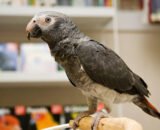- You have no items in your shopping cart
- Subtotal: $0.00
Brazilian Rainbow Boa
Original price was: $649.99.$549.99Current price is: $549.99.
Brazilian Rainbow Boas are beautifully-patterned snake, but are named for their iridescnece that can be seen in good lighting.
- – This medium sized boa will generally reach about 4 to 6ft
- – Like all boas, they feed by first constricting their prey, wrapping their bodies tightly around their meal








Customer reviews
1 review for Brazilian Rainbow Boa
I received Brazilian Rainbow Boa in California last week. This cute Brazilian Rainbow Boa is solid eater and extremely beautiful.
Write a customer review